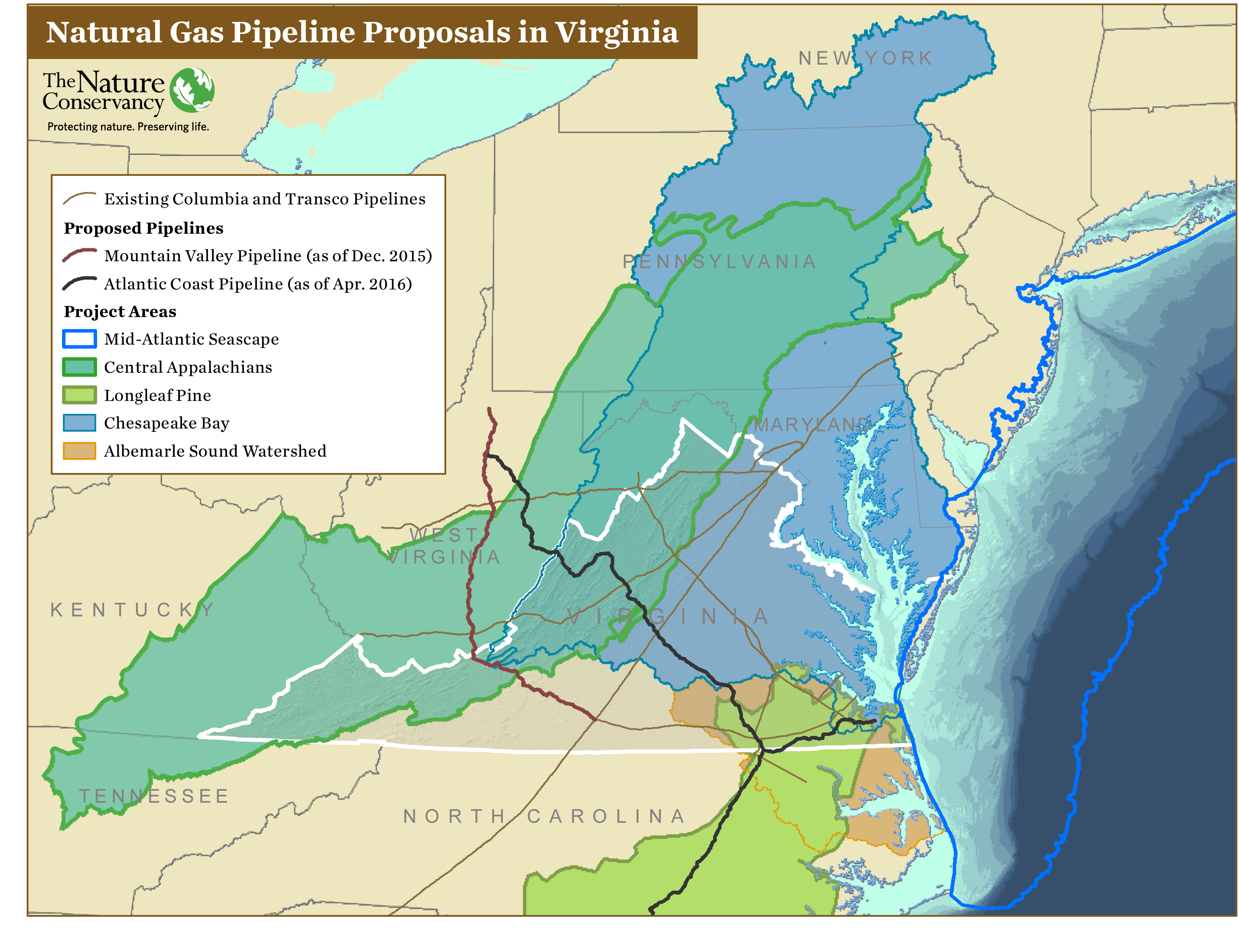The Nature Conservancy has been deeply engaged in efforts to avoid and minimize the impacts that natural gas pipeline construction could have on the forests and rivers of the Central Appalachian Mountains, tidewater Virginia, the Albemarle Sound and the coastal plain of North Carolina. Each of these regions harbor globally significant natural resources that are longstanding conservation priorities for the Conservancy.

The Conservancy was an active participant in the environmental review process for the Atlantic Coast and Mountain Valley Pipelines. As proposed, these projects would affect not only Conservancy preserves and conservation easements, but also intact habitats that we recognize as critical to the long term survival of our native biodiversity.
Our efforts included dialogue and data sharing with project developers and state and federal regulatory and land managing agencies, and submission of formal correspondence regarding potential impacts to the Federal Energy Regulatory Commission (FERC).
The Conservancy's overall goal has been to ensure that impacts to preserves, conservation easements, and irreplaceable habitats were completely avoided, and that any remaining impacts from these projects are minimized to the greatest practicable extent, and then fully compensated for.
Our activities on this project are guided by a global framework we call Development by Design. This framework acknowledges people's need for food, water, energy and minerals, and calls for smarter decisions about how to protect, manage, and develop our lands and waters.
We believe the Conservancy's most valuable contribution to the public dialogue around these projects is first to provide information on the location and nature of resources that should be avoided, and then to support efforts to develop ecologically sound methods for minimizing and compensating for unavoidable impacts.
To that end, we communicated extensively with pipeline developers to highlight conflicts between their project plans and irreplaceable resources. Our Central Appalachians Project Critical Habitats Dataset identifies areas with high biodiversity value, and includes occurrences of endangered species, endemic and/or restricted range species, highly threatened and unique ecosystems, and areas associated with key evolutionary processes.
We made this data publicly available in the fall of 2014, so that pipeline developers could incorporate this information into the earliest stages of their project design.
The Conservancy also provided comments throughout the environmental review process for both projects, with the hope that FERC would heed our request that the final alignments of both projects avoid all preserves, conservation easements, and critical habitats for conservation and that the alignments are fully compatible with the Land and Resource Management Plans of the Monongahela National Forest and George Washington & Jefferson National Forests. Both projects received approval from FERC in October 2017. The approval routes avoided some of the resources we had identified as important.
We have also assisted state agencies with developing scientifically valid methods to account for direct and indirect impacts that could occur, particularly to intact forest habitats and the species that depend on them. We urged agencies to require pipeline companies to replace the functions and values of habitats converted or degraded by project construction and operation.
The Commonwealth of Virginia entered into forest mitigation agreements with the pipeline companies in late 2017. In 2018, the agencies managing the resulting funds are designing programs that will support offset projects. We have submitted recommendations to those fund managers on how forest fragmentation mitigation funds should be administered and spent. Our recommendations are based on a set of Mitigation Principles that our organization has developed in order to ensure that projects meet high and consistent standards for mitigation and maximize conservation outcomes.
TNC Communications on Pipeline Impacts
|
